Consequences of Gender-Based Violence and Prevention Strategies
At health level
Lethal consequences (homicide, suicide, maternal mortality,
infant and AIDS mortality) or non-lethal consequences occur at this level,
namely:
·
Acute
physical – injury, shock, disease, infection;
· Chronic
physical – disabilities, somatic problems, chronic infections, chronic pain,
gastrointestinal problems, appetite and feeding disorders, sleep, drug and/or
alcohol abuse);
·
Reproductive
– miscarriages, unwanted pregnancies, abortions, sexually transmitted diseases
including HIV/AIDS, menstrual disorders, pregnancy complications, gynecological
conditions, sexual function disorders.
At the psycho-social level
Many societies blame victims/survivors of sexual and gender-based
violence. Marginalization and social exclusion cause subsequent disorders,
including shame, self-hatred, self-loathing and depression. As a result of
stigma, most victims/survivors of sexual and gender-based violence do not
report these incidents. There are two categories of consequences in this
regard, both of which are difficult to detect and which are remedied over time
and with considerable effort:
· Emotional
and psychological consequences – post-traumatic stress disorder, depression,
anxiety, fear, anger, shame, insecurity, self-hatred, mental illness, suicidal
thoughts and behavior.
· Social
consequences – victim/survivor blaming, loss of role/function in society,
social stigma, social rejection and isolation, feminization of poverty, realization
of gender inequalities.
Legal framework/Justice
If national legislation does not provide protection against
sexual or gender-based violence, or if practices in legal and judicial bodies
are discriminatory, this type of violence may be perpetuated by the lack of
danger of criminal punishment. Common attitudes of blaming victims/survivors of
sexual and gender-based violence are often reflected at court level.
Many reports/complaints of such incidents are dismissed or
perpetrators receive light sentences. In some countries, the punishment for
perpetrators of violence and gender-based violence is another violation of the
rights and freedoms of the victim/survivor, namely forced marriage to the
perpetrator. Psychologically, the victim is again victimized by the fact that
the perpetrator is recognized as innocent.
Safety/Security
The victim/survivor feels unsafe, threatened, fearful,
unprotected from the risk of being assaulted again. Another aspect of the
security context is that, in working with trafficking incidents, police and
security forces may enter these networks. Also, if the police or security
forces are not sensitive to the victim’s suffering and need for care, dignity
and respect, the trauma can deepen because of the delay in providing
assistance.
Victim/Survivor Assistance
Sexual and gender-based violence is an issue that affects
individuals, communities and institutions. Given its complexity, this type of
violence is most effectively addressed when multiple sectors, organizations and
disciplines work together to identify and design strategies that can counter
this violation of fundamental human rights. All actors involved in the
development of these strategies need to jointly agree on a set of guiding
principles and realize that sexual and gender-based violence is a serious
violation of fundamental human rights.
At the level of refugee assistance, there are several
principles that shape the design and design of refugee assistance:
·
Involvement
of the refugee community, particularly in decision-making;
· Ensuring
a balanced participation of men and women, girls and boys in the planning,
implementation, monitoring and evaluation of programmers targeted at them;
·
Ensuring
multispectral coordination of the actions of all actors involved;
·
Ensuring
written records, data recording, planning of activities
At the individual level, the following set of principles
should be taken into account:
·
Ensure
the safety of victims/survivors of sexual and gender-based violence and their
families;
·
Respecting
the confidentiality of affected persons and their families
·
If
the victim of sexual and gender-based violence is a child, the principle of the
best interests of the child must prevail;
·
Non-discrimination.
At multi-sectoral level
The foundation of this approach is international protection
which aims to ensure that refugees are adequately protected and enjoy the
exercise of their rights. Community
involvement is essential in the design, planning and implementation of programs
(involving community members in preventing and responding to sexual and
gender-based violence). There are then principles and operational rules on
which all actors involved must agree, thus ensuring a coordination function. It
should not be forgotten that there may be many actors whose contribution can be
useful and whose roles need to be defined. Preventing and responding to sexual
and gender-based violence involves actions carried out by different relevant
actors, most of them representing one or more of the following sectors:
medical, psycho-social, security and legal.
Only by identifying the factors that contribute to and
influence the type and extent of sexual and gender-based violence can
appropriate and effective prevention strategies be developed. Prevention
activities target potential perpetrators, potential survivors and those who can
help them. Activities should therefore target refugee populations, humanitarian
aid workers, host country nationals and government authorities. As with all
sexual and gender-based violence programs, prevention strategies are most
effective when all sectors, including refugees, are involved in their design, implementation
and evaluation.
Effective prevention strategies will include actions that
focus on five key objectives: transforming socio-cultural norms, with a focus
on empowering women and girls; rebuilding family and community structures and
support systems; designing effective services and facilities; working with
formal and traditional legal systems to ensure their practices are in line with
international human rights standards; and monitoring and documenting incidents
of sexual and gender-based violence.
Preventing sexual and gender-based violence involves
identifying and eliminating those factors that make certain members of the
refugee community vulnerable to this type of violence and developing a range of
strategies to improve protection for all refugees. These strategies will be
most effective when they are designed, implemented and monitored by all sectors
involved in protecting and assisting refugees in refugee communities and by
refugees themselves.



